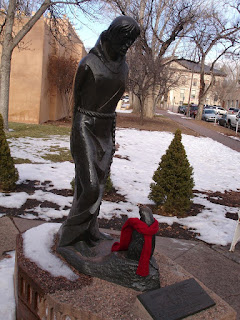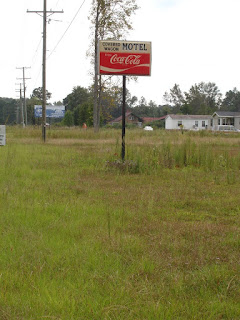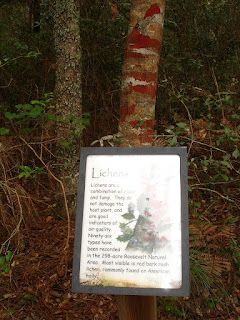When I was a
kid in the 1950s my first bicycle came from the guys that I hung out with at
the bar.
It was a
Columbia – one speed, balloon tires, with a turquoise colored tank containing a
push button horn over the top bar. And
technically my bar buddies didn’t actually give it to me. Instead, with my father’s encouragement, they
voted for me at $1.00 per vote with their purchases –mostly cigarettes – at the
drug store just down the street from the saloon. The bike was first prize, and I actually
didn’t want it. I was hoping for the runner-up
prize, which was a leather fringed cowboy jacket. I was after all probably only eight or ten
years old and my consumer judgment wasn’t all that developed.
The drinking
establishment – The “Parkway” on Park Street in New Britain, Connecticut – was
the first of many that my father took me to over the next several years. We went mostly on Saturdays and Sundays –
occasionally spending the afternoon there and then going home to collect my
mother and bring her to the restaurant part of the tavern in back for
dinner. I am an only child. And I liked the feeling of having this
special “guy place” to which we could, on special occasions, bring my mother.
But when it was just the two of us, Dad and I always sat up front in the barroom
itself.
I of course
was not allowed (by law) to actually sit “at the bar”.
Instead I was ensconced in one of the several booths that separated the
actual watering hole from entrance. I
think these leather stalls were intended for female customers who also at that
time were not permitted access to the alcohol altar – but I can’t remember ever
seeing anyone other than me ever occupy them. My father sat on a stool with the other men drinking rye and gingers, playing cribbage, and
winning arguments on the merits of the New York Yankees, the Democratic party
(especially Harry Truman) and labor unions – while I downed several cokes and
bags of Wise potato chips several feet away.
The grease and salt from my hands and lips would coat the glass like a
dog’s nose on an automobile window.
The Parkway
was owned and run by two Italian brothers, Sam and Tony – the former tall and
slim, the latter the opposite in both ways.
With not much else to do – I don’t remember this bar as having a
television – I mostly watched the two proprietors go about their daily business
which seemed to consist almost entirely of wiping down the wooden surface of
the bar and being available to pour another one. This was fine with me – a quiet, if not
anti-social at most an a-social child – I found the thoughts inside my head
more interesting than the fears and challenges of interacting with the outside
world. Both of the Parkway brothers wore
freshly starched and ironed white dress shirts with the top button open and
both sleeves rolled up twice to reveal enough of a glimpse of their large
wrists to be impressive. This dress code
and work ethic turned out to be universal among the various bartenders that
served me cokes over the early part of my formative years. I aspired to that look but my forearms never
acquired the girth to pull it off.
All of the men
smoked cigarettes – my father’s choice was unfiltered Camels – and sometimes on
weekends we would wander down the street to some form of mini-arena with
balcony seating where we would watch semi-professional basketball games. (The teams were sponsored by local business
and the players were former high school or college jocks who received a small
stipend for playing.) Cigarette smoke
would rise from the fan base in the upper tier and eventually settle down onto
the court to mix with the smell of sweat.
At halftime we would return to the bar for a quick break.
Then one
evening my father, who stopped at the Parkway daily on his way home from work
at a Tool Manufacturing Factory in a neighboring town, announced that Sam and
Tony had “forgotten where they came from” (or something similar) – and we never
went back there again.
But almost
immediately we became regulars at the “Blue Danube” – slightly out of town but
on my father’s route from work. A new
place with the same crowd but different people.
Sunday
mornings were my favorite time at our latest haunt. After nine o’clock mass (to which my mother
never went) Dad and I would head to the Blue Danube. I think bars were not allowed to serve
alcohol before noon but nonetheless rye-and-ginger somehow appeared. My father was a
very good cribbage player – to the extent that he was monetarily “backed” by
other lesser players and split the winnings.
In this case the “bank” was the bar’s owner who had nicknamed himself
‘King”. The Sunday morning games seemed
more serious (i.e. higher stakes) than those at the Parkway. But that wasn’t what was special about that
time and place to me. It was the shrimp
cocktails, which replaced the bags of Wise potato chips as my principal form of
entertainment. Again from time to time
we left to get my mother and bring her here to our place for Sunday dinner in
the back room.
I think “King’
got into some kind of financial trouble because suddenly we were hanging out at
another out-of-town but on-the-way-home-from-work taproom called “The
Hedges”. And now my father was picking
me up after school and bringing me there on some weekdays as well as Saturday
and Sunday.
There were no
shrimp cocktails here so I was back to chips.
But there was a bowling machine and – even though legally I was not
supposed to use it because of its physical location. In fact the bar’s operators knew when the
“Liquor Inspectors” (or whatever) were paying them a visit and during those
times I was confined to my booth. Most
of the time however I would monopolize the device for hours at a time perfecting my carom
shots and seven-ten splits, occasionally taking on, and beating just about
anyone in the house. They had a
tournament for two-person teams and I partnered with the fiancé of one of the
owner’s three sons who likewise spent a lot of time on the machine. We swept the competition. And my father, who encouraged me as well as
feeding me quarters, couldn’t stop talking about it – even outside of the
tavern.
The
father-owner died and I think there was some inheritance fall-out because dad
and I were now patronizing “The Chatterbox” in our immediate neighborhood. The two owners each had nicknames. “Doc”, a former high school basketball star
and “Chink” an extremely non-Asian looking Italian the origin of whose
sobriquet was never made clear.
It was the
familiar storyline with different actors but sausage grinders instead of
shrimp, and pinballs in lieu of bowling machines. And they, again illegally as I recall, paid
prize money. I was no wizard but I usually
came out ahead in the profit-loss ratio.
And my father stood by me as I played and kept feeding me coins. Dad’s factory went on strike during our
Chatterbox phase, so I probably put in more hours per week there than any other
place. They even let me sit and eat at
the bar occasionally. Fortunately I was
hidden deep in a booth one day when Doc’s daughter, with whom I turned out to
be in Junior High School, dropped in to see her dad. She didn’t say hi so maybe she didn’t see
me. Or maybe she was as uncomfortable as
I was in the situation.
My father’s
and my last stomping ground was “Teresa’s” – a pizza and Italian cuisine
restaurant and bar just up the street from the Chatterbox. I don’t know why we moved, but suddenly one
day we were just there. Largely “same
old, same old” but: (1) Teresa’s had an above-the-bar television on which I
watched, among other things, the classic movie “High Noon” standing just barely
outside the legal bar area in order to see over the heads of the disinterested
stool sitters, and (2) a shuffle board table.
The elevated
playing surface was probably twenty or more feet long with gutters on each side
that allowed a player to slide their fingers along the side to help align their
shots. (Not everyone did that, but it
was my preferred technique and one I picked up by observing one of the better
players style.) Controlling the speed
and placement of a metal disk over a twenty-foot distance is an immense
ego-boost at any age, but particularly as a wannabe man among men.
Like the
bowling machine I had a virtual monopoly on the board – playing solo much of
the time and contending with my fellow barflies on occasion. Unlike all our previous haunts, the crowd at
Teresa’s included a good portion of twenty to thirty year old men and they
provided most of the competition. There
were no tournaments – but I think that I won more than I lost.
Frequently my
father would play doubles with me or against be in singles. Maybe he realized our time together in bars
was nearing an end. In any event, it was
good.
I entered high school and wanted to participate in more life outside the cave. By my junior year I had stopped going. My father remained a regular frequenter of
Teresa’s – normally driving there every night after dinner while I worked on my
homework. In my senior year he died at
work of a cerebral hemorrhage. That
night he and my mother were going to come see me play basketball for my high
school team. My now widowed mother and I
continued to get pizzas at Teresa’s and through college – the first two years
of which I commuted to from home – I would visit Teresa’s back room with my
male friends or a date for soda and pizza.
But even when I became “legally of age” I never sat at the bar. In fact I can only think of two times in my
adult life when I sat at any bar – and both of them were years before I had a
son of my own.
This whole
set of memories was set off by an interview I heard the other day on NPR’s
“Terry Gross - Fresh Air” program with J.R. Moehringer – author of a
memoir “The Tender Bar”. Abandoned as a
young boy by his disk jockey father and in need of a male influences – with his
mother’s encouragement and choreographing – young Moehringer hung out
incessantly at his uncle’s bar – "Long before it legally served me, the
bar saved me" – providing him with role models and an entry way in to the
mysterious business of being a man.
In spite of
how it might appear Moehringer said that the hours he spent with his bar
buddy/surrogate fathers was a happy time.
And, other than occasional moments of boredom, mine were also.
His adult bar family seemed to have
consciously adopted the male-mentor, father-figure role while the men at the
series of bars at which I habituated were more of the slightly distant uncle
type – seemingly glad to have me around, occasionally interacting, friendly
enough – profane (but cursing then was levels below what has now become common
language) – and frequently really, really funny.
Still I’m not
sure why my father did it. He never
talked about it and by the time in life that I wondered about it, he wasn’t
around to ask. I chose never to ask
mother about it. I’m guessing he had a
similar motive to Moehringer’s mom – men teaching boys to be “a man”. This was after all the world in which he
chose to define much of himself to others and to me, but he never hyped this
way of life being “the way” – perhaps it was intended as a show-not-tell life lesson.
Even after writing this, it’s a
mystery to me. But I don’t think that I
suffered for it. After all, how many of
us ever get the chance – with the shuffleboard game on the line, in a noisy
smoke-filled bar, and our father watching – to score the winning four-point
“leaner”?
The older I
get, the better I was.

















